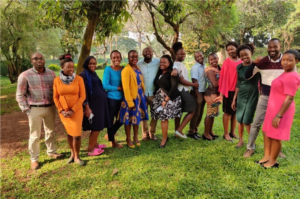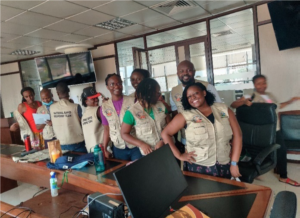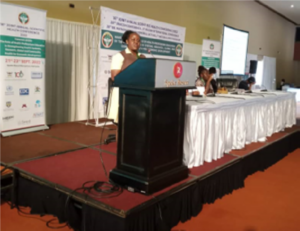 |
Immaculate AtuhaireBScPH; MScPH, Advanced-FETP Host Site: Public Health Emergency Operations CentreHost Mentor: Dr. Issa Makumbi |
||||
ABOUT THE FELLOWImmaculate Atuhaire is a field epidemiologist with a master’s degree in Public Health and a Bachelor’s degree (Hons) in Public Health from International Health Sciences. She has particular interest in public health emergencies and response. Immaculate was hosted at the National Public Health Emergency Operations- Ministry of Health (PHEOC), the hub for coordinating preparedness, response, and recovery from public health emergencies. At her host site, she was involved in a number of activities that helped her gain a better understanding of disease preparedness, detection and response. This also equipped her with skills in public administration and training . She has participated in a number of outbreak investigations such as Malaria outbreaks, Yellow fever outbreaks, COVID-19 outbreak, Jigger infestation outbreak and Ebola outbreak. She has conducted an evaluation of the health interventions such as Home-Based care for COVID-19 and quarantine services in Ebola. She also participated in risk assessment and preparedness of six border districts in West Nile and drafted a national rapid preparedness plan for Plague. Achievements at the Host Site
Fellowship program specific achievements
Capacity building
Written communication
Conference presentations
International conferences
Summary of Epidemiological Study:Title: Assessment of preparedness of border districts to respond to plague-West Nile Region, Uganda- August, 2021. Background: Ituri Province in Democratic Republic of Congo (DRC) is a hotspot for plague, with occasional crossing of case-patients into Uganda. As of June 2021, 117 cases were reported in Ituri Province, DRC. In August 2021, we evaluated the risk of plague importation into West Nile region of Uganda and assessed the level of preparedness to respond. Methods:We used the Population Connectivity Across Borders toolkit to assess risk of plague introduction in 6 West Nile districts and one city. We categorized risk in districts based on previous cases, volume of cross-border movements, and proximity to the outbreak epicenter in DRC. We assessed districts’ preparedness to respond using an adapted WHO checklist and Readyscore criteria (scores <40%= ’not prepared’). We assessed 47 health facilities across six West Nile districts for response readiness in terms of healthcare worker training, availability of standard operating procedures, and training of village health teams. Results: Two districts (Arua and Zombo) in West Nile were in the highest-risk category for plague importation. All districts scored as ‘not prepared’, although Zombo and Arua scored higher (both 39%) than other districts. Of 47 health facilities assessed, 21 were ‘not ready’, and no facility was ‘prepared’. Only 10 had staff who had been trained in plague-related activities. Conclusion: No districts or health facilities in the area assessed were prepared to respond to potential plague importation. The risk of importation is high, especially in Arua and Zombo Districts. Arua and Zombo Districts should be prioritized for preparedness activities for a potential plague outbreak Key lessons learnt during the fellowship
|
|||||
|
|
|

|

|


